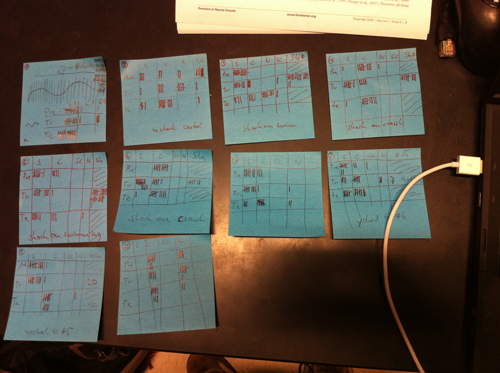Main Menu
Welcome
Thankfully, this preparation was all but boring! It was extremely active spontaneously, uch more so than any other preps so far. Basically any stimulation at all would make it do something, mostly swimming. The postdoc normally occupying this lab, Chris Palmer, was around to have a look what I was doing in his lab. While setting up the experiment and testing the stimulation parameters, we tested a hypothesis that crawling can actually also be generated by stimulating anterior ganglia, if only one used the right stimulation parameters. It turned out to work: short, high-frequency stimulation yielded crawling responses, where normally we'd only get swimming or shortening for the parameters normally used with this stimulation location. That was very interesting as nobody had tried that before.
However, the preparation was so 'jumpy' that it was difficult to adjust the posterior stimulation to any meaningful value. I went with very short duration and rather high frequency to just get some crawling with posterior stimulation. Once the experiment started (some 20 minutes after I set the stimulus parameters), the preparation had calmed down considerably and the short stimulations basically only elicited crawling, but very often also no discernible pattern at all. Given the large number of unrecognizable patterns, I probably cannot use this preparation in my evaluations at all. This means, in terms of hard data, this day was totally wasted. On the other hand, I did get a witness to see that my hypothesis of eliciting crawling even by stimulation very anterior ganglia was confirmed at least in this one animal.
That's one nice aspect about experimental science: even if your experiment didn't work at all, most often, you still learn something anyway.
For the open science gurus among you, I know you really want to see the raw data and not just the compiled version on the Google spreadsheet. Here you go, it doesn't get any rawer than this:


Posted on Wednesday 15 September 2010 - 02:36:31 comment: 0
{TAGS}
{TAGS}
You must be logged in to make comments on this site - please log in, or if you are not registered click here to signup
Render time: 0.0602 sec, 0.0044 of that for queries.





